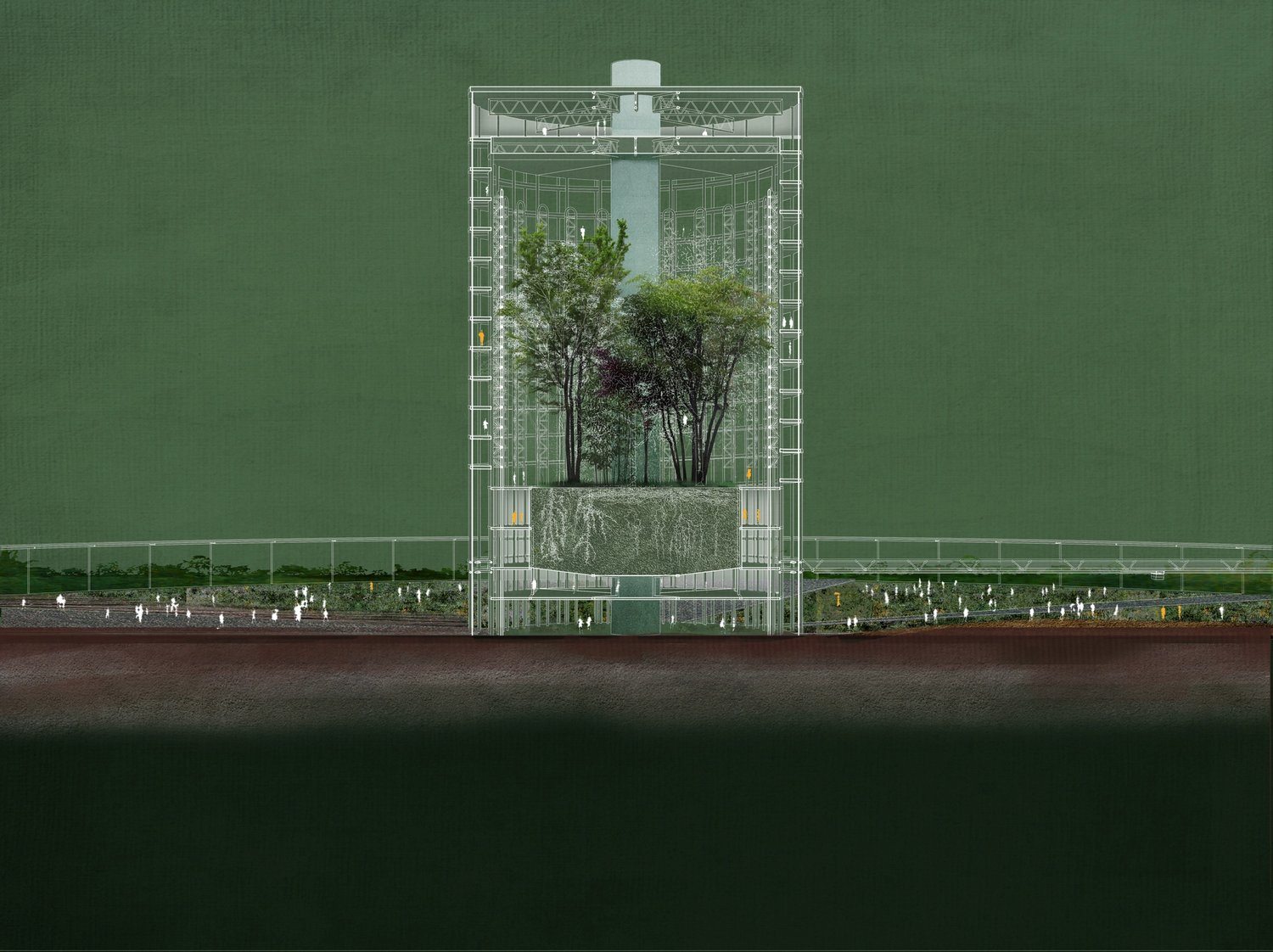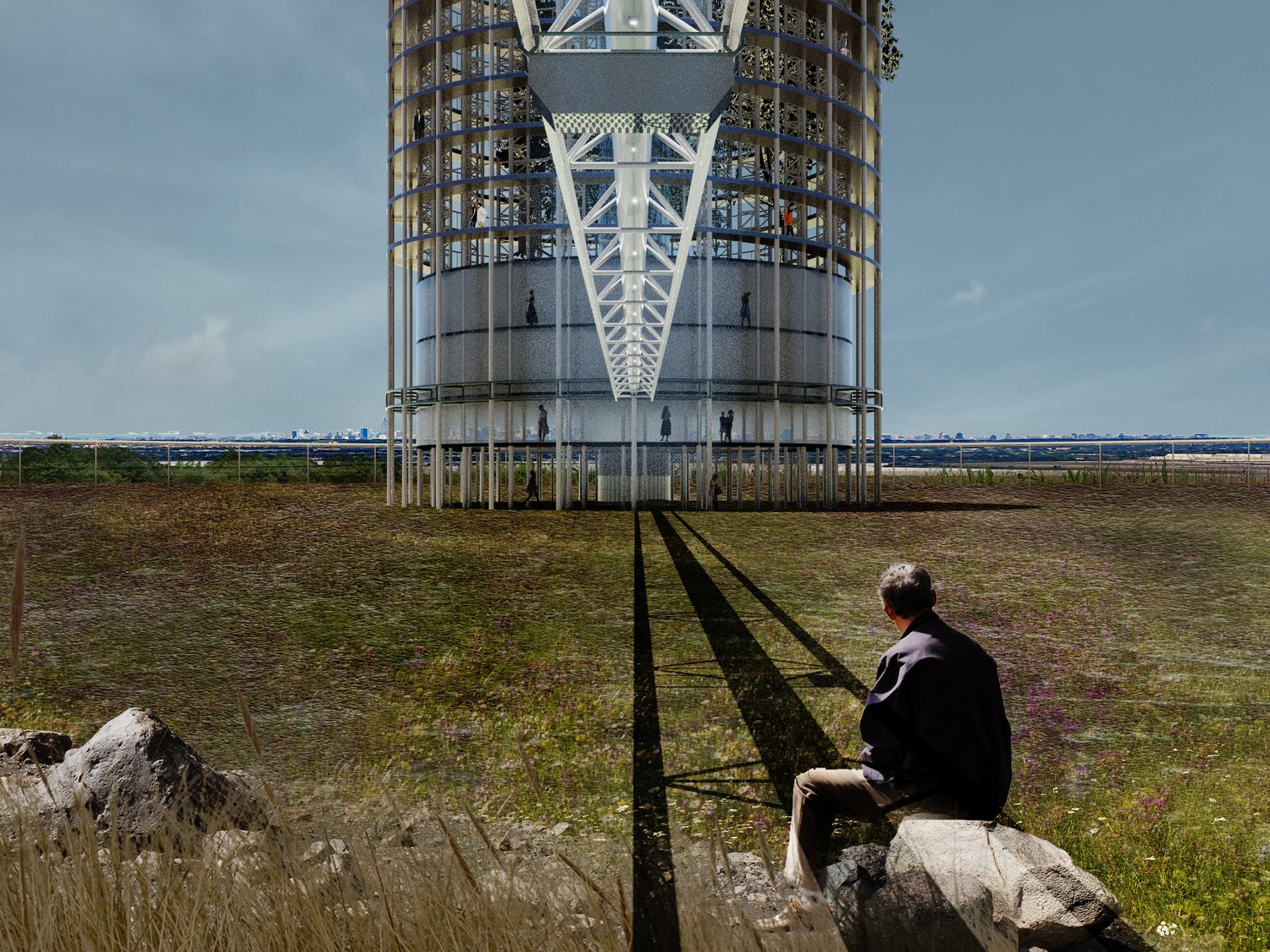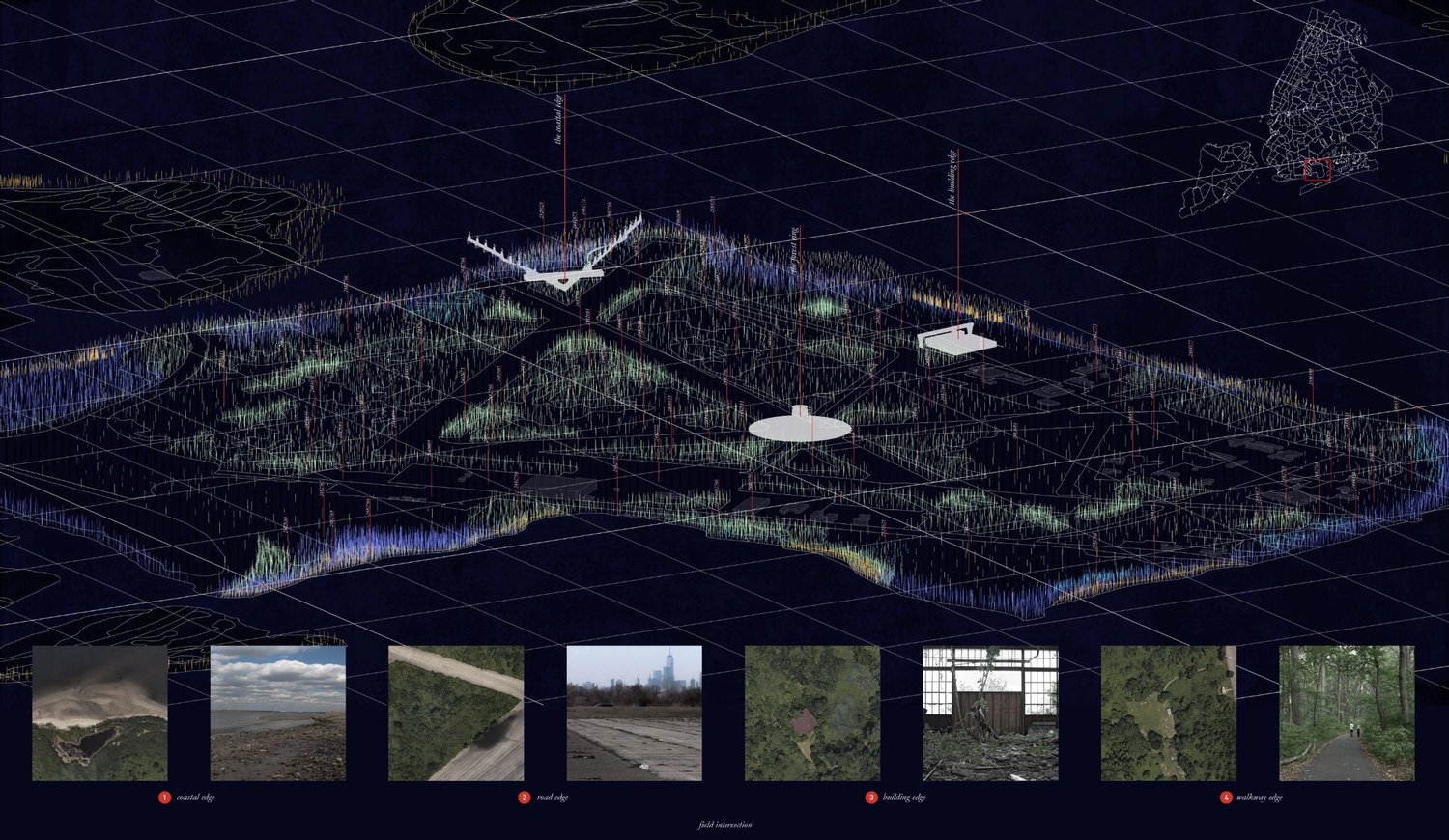How the field(s) meet
ONE-AFTR / Joon Ma, Ryu Ahn
( Concept )
Modern museology is based on the display of displaced, simulated, and recreated objects that are taken out of their original context. These practices are manifestations of an anthropocentric tendency where the subjective viewpoint of humans dictates our understanding of the world. However, with climate change, one of the most pressing issues of our time, we must reexamine our relationship to the natural environment to make sense of the changes we see today. Ecological processes occur at large scales, and the changes we see today may never have been witnessed before. How the Field[s] Meet reimagines the concept of a museum by subjecting the architecture of the museum to become part of the ecological cycle. The project combines the program of a field station, lab and home to scientists conducting fieldwork, and a museum to provide both scientists and the visitors a vantage point to observe ecological transformations in the built environment.
We have progressively fragmented and occupied the natural environment and created distinct divisions and metrics to occupy space. For humans, edges are black and white, measured and quantified, but ecological transformations defy the boundaries set by us. The changes we see today are no longer about how we see the world around us but more about how nature sees us and responds to our actions. Given that these conditions deal with both the natural and built environment, and mediating between the edges defined by humans and nature, architecture must play a role in designing the spatial parameters of these studies: in particular, in facilitating, mediating, and observing the liminal zones.
The project frames ecological transformation and research as a spectacle by combining the program of field station and the museum. The ‘field museum’ facilitates the study of ecology by coordinating the external environment, humans, and machines to leverage all the tools available to us to understand the impact of climate change in our natural environment. The ‘field museum’ not only provides the scientists and the visitors the vantage point to observe the ecological transformation but also mediates between the liminal zones of the ecological transformation between the built and the natural environment. The permanent exhibition of the ‘field museum’ includes self-generating and curated content by the ecological transformation on site.




- Project Team
- ONE-AFTR / Joon Ma, Ryu Ahn
- Project Name
- How the Field[s] Meet
- Team Location
- USA & Republic of Korea
- Category
- Architecture & Design